
Quick Tips
- The first step to removing wax from fabric is to cool it with ice.
- The second step to remove wax from fabric is to iron it out.
- The final step to removing wax from fabric is to wash it.
- To remove wax from wood you must be careful not to scrape the wood.
- Removing wax from carpeting is difficult but not impossible.
- Removing wax from hard surfaces like glass and plates is probably the easiest.
The first wax humanity became aware of was probably earwax. Ears never became a popular source for wax. We went with the beehive instead. Beeswax proved to be the wiser choice of the two. Nowadays we get wax from other animals, like sheep, sperm whales, and insects. We also can get wax from plants, like carnauba, jojoba, bayberry, rice bran, and soy.
There are mineral waxes, synthetic waxes, and petroleum waxes. The three most popular waxes are beeswax, carnauba (plant), and paraffin (petroleum). So chances are if you are removing wax from something, it’s probably one of these three types. Luckily, since all waxes have similar properties, the advice for getting rid of wax listed below will work with any type of wax.
Remove Wax from Fabric, Wood, Carpet, and Hard Surfaces
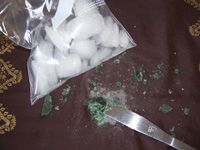 The first step to removing wax from fabric is to cool it with ice. It is best to begin the cleaning process as soon as you can. By cooling the wax to below freezing, the wax becomes brittle and will break off the fabric easily. Use a dull butter knife to scrape the wax off. If the material the wax is on is delicate, you will want to do this very carefully. After scraping the wax off, the only wax left will be the wax that has coated the fibers within the material.
The first step to removing wax from fabric is to cool it with ice. It is best to begin the cleaning process as soon as you can. By cooling the wax to below freezing, the wax becomes brittle and will break off the fabric easily. Use a dull butter knife to scrape the wax off. If the material the wax is on is delicate, you will want to do this very carefully. After scraping the wax off, the only wax left will be the wax that has coated the fibers within the material.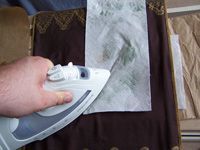 The second step to remove wax from fabric is to iron it out. Irons have different heat settings for different materials. Your iron should have a dial with the materials listed; cotton and synthetics like rayon and nylon should be listed on the dial or knob. Heat the iron to the recommended setting. Place an absorbent paper, such as newspaper or a brown paper bag, below and above the wax stain. Iron over the top with the fabric sandwiched in between the two layers of paper. After 30 seconds of moving the iron around, lift the paper up to see how much wax you have absorbed. Move the paper to a fresh spot and continue until the paper no longer absorbs wax from the fabric. This means you have absorbed as much wax as you can using this method.
The second step to remove wax from fabric is to iron it out. Irons have different heat settings for different materials. Your iron should have a dial with the materials listed; cotton and synthetics like rayon and nylon should be listed on the dial or knob. Heat the iron to the recommended setting. Place an absorbent paper, such as newspaper or a brown paper bag, below and above the wax stain. Iron over the top with the fabric sandwiched in between the two layers of paper. After 30 seconds of moving the iron around, lift the paper up to see how much wax you have absorbed. Move the paper to a fresh spot and continue until the paper no longer absorbs wax from the fabric. This means you have absorbed as much wax as you can using this method.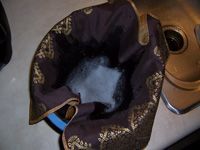 The final step to removing wax from fabric is to wash it. The ironing step should have nearly removed all the wax. If the wax was from a colored candle, then the dye has stained the fabric. This stain should be treated like any other stain, with a stain treatment like OxiClean (which you can order from Amazon). OxiClean is made from wood ash treated with hydrogen peroxide. This process makes it a powdered oxygen bleach, which is to say the oxygen takes the place of chlorine. Chlorine is a harmful toxin that is bad for humans and the environment. Make sure you let the stain soak in the stain treatment for a while before washing it.
The final step to removing wax from fabric is to wash it. The ironing step should have nearly removed all the wax. If the wax was from a colored candle, then the dye has stained the fabric. This stain should be treated like any other stain, with a stain treatment like OxiClean (which you can order from Amazon). OxiClean is made from wood ash treated with hydrogen peroxide. This process makes it a powdered oxygen bleach, which is to say the oxygen takes the place of chlorine. Chlorine is a harmful toxin that is bad for humans and the environment. Make sure you let the stain soak in the stain treatment for a while before washing it.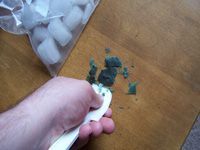 To remove wax from wood you must be careful not to scrape the wood. The quickest way to remove wax from wood is to pick or scrape off the big chunks. And if you need to melt the smaller stuff with a hair dryer and soak the melted wax up with a paper towel. Once you have soaked up all the wax you can, polish the wood with wood furniture polish.
To remove wax from wood you must be careful not to scrape the wood. The quickest way to remove wax from wood is to pick or scrape off the big chunks. And if you need to melt the smaller stuff with a hair dryer and soak the melted wax up with a paper towel. Once you have soaked up all the wax you can, polish the wood with wood furniture polish.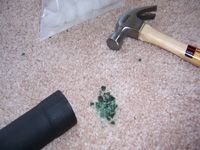 Removing wax from carpeting is difficult but not impossible. Freeze the wax with ice packs. Once it’s frozen, break the wax with a hammer and vacuum it out with the hose attachment. Refreeze the wax every 30 seconds. By freezing the wax, you prevent the wax from soaking in or bonding with the fibers any more than they already are while you vacuum them out. Use a stiff brush to get the little pieces free from the carpet, and immediately suck them up with the vacuum. If the wax dye stained the carpet, treat the stain like you would any other stain once you have frozen and removed all the wax.
Removing wax from carpeting is difficult but not impossible. Freeze the wax with ice packs. Once it’s frozen, break the wax with a hammer and vacuum it out with the hose attachment. Refreeze the wax every 30 seconds. By freezing the wax, you prevent the wax from soaking in or bonding with the fibers any more than they already are while you vacuum them out. Use a stiff brush to get the little pieces free from the carpet, and immediately suck them up with the vacuum. If the wax dye stained the carpet, treat the stain like you would any other stain once you have frozen and removed all the wax.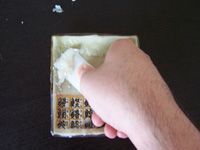 Removing wax from hard surfaces like glass and plates is probably the easiest. If the item will fit in the freezer, put it in for an hour to freeze the wax. Break as much wax off as you can and repeat if necessary. Use something that won’t scratch to scrape the wax off. Hard plastic, like a credit card, works well. To get the last little bit of wax off, use a hair dryer to melt the wax and a paper towel to soak it up. If the object is still frozen, you may want to wait until it warms to room temperature before blasting it with hot air.
Removing wax from hard surfaces like glass and plates is probably the easiest. If the item will fit in the freezer, put it in for an hour to freeze the wax. Break as much wax off as you can and repeat if necessary. Use something that won’t scratch to scrape the wax off. Hard plastic, like a credit card, works well. To get the last little bit of wax off, use a hair dryer to melt the wax and a paper towel to soak it up. If the object is still frozen, you may want to wait until it warms to room temperature before blasting it with hot air.
Tips for Wax Removal
- Don’t skip the freezing step; wax removal is so much easier when the wax is frozen.
- A credit card works really well to scrape off frozen wax, but use one you don’t care about because it might snap in two.
- When ironing, make sure to have something to soak up the wax underneath the fabric. Otherwise it will soak into your ironing board, which will transfer it onto the next item that gets ironed.
- Paper towels soak up wax better than paper bags.
- Don’t leave the iron on the wax-soaked paper towels. It is ridiculously flammable.
- If the fabric isn’t washable, you will have to dry clean it.
- Don’t let candle wax get on your stuff next time.
- A stiff plastic spatula works really well to scrape off frozen wax, and they are cheap.
Natural Wax Cleaners
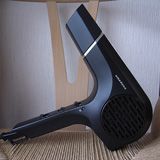 Heat in the form of a hair dryer or iron will melt the wax, making it easy to transfer to an absorbent surface like a paper towel or paper bag.
Heat in the form of a hair dryer or iron will melt the wax, making it easy to transfer to an absorbent surface like a paper towel or paper bag.
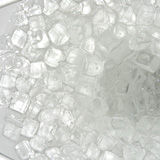 Cold makes wax brittle and easier to remove than when it is room temperature. Ice packs, ice cubes, dry ice, or even liquid nitrogen should do the trick.
Cold makes wax brittle and easier to remove than when it is room temperature. Ice packs, ice cubes, dry ice, or even liquid nitrogen should do the trick.
 Fingernails are effective in removing wax. Jerry Seinfeld used to joke that scraping something off your clothes with your fingernail was the only true form of dry cleaning. It works to a point—the point at which you get wax jammed under your fingernails. Try using a credit card instead.
Fingernails are effective in removing wax. Jerry Seinfeld used to joke that scraping something off your clothes with your fingernail was the only true form of dry cleaning. It works to a point—the point at which you get wax jammed under your fingernails. Try using a credit card instead.